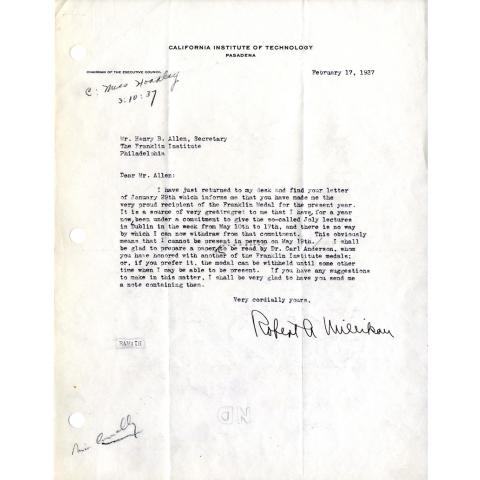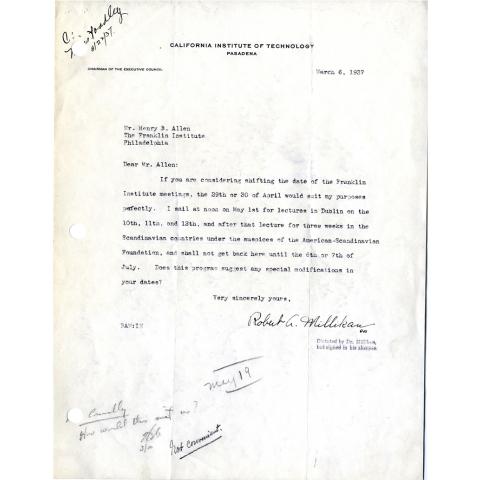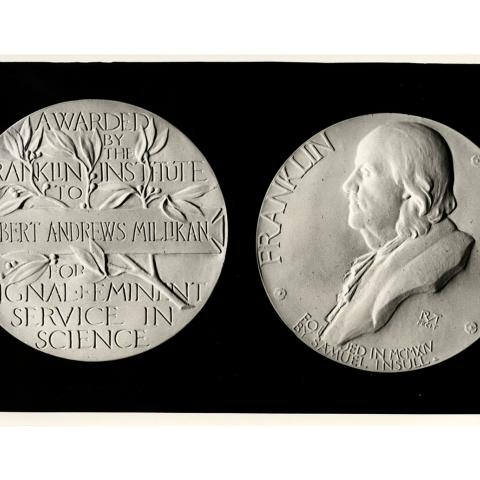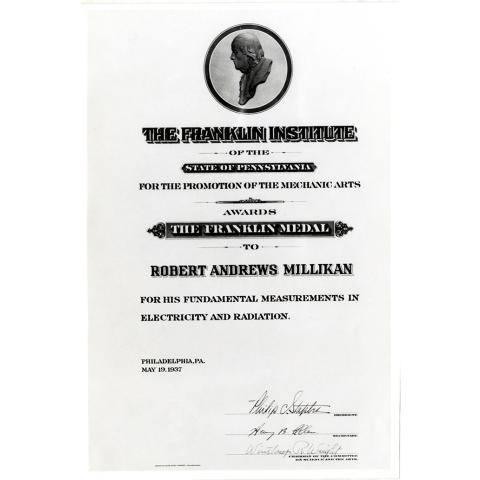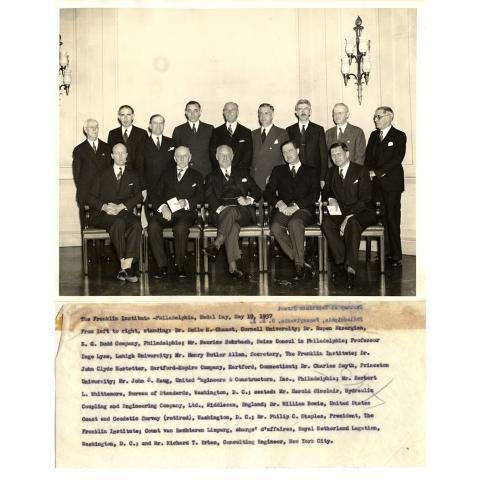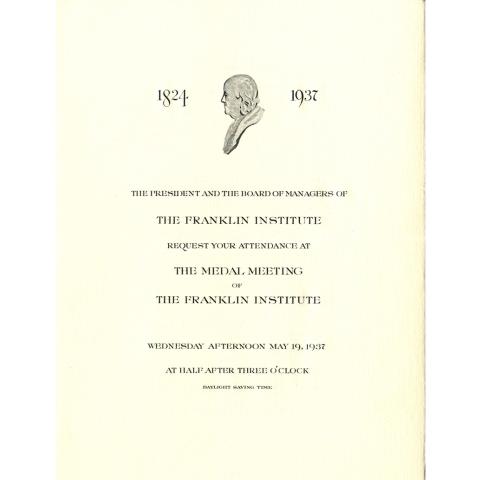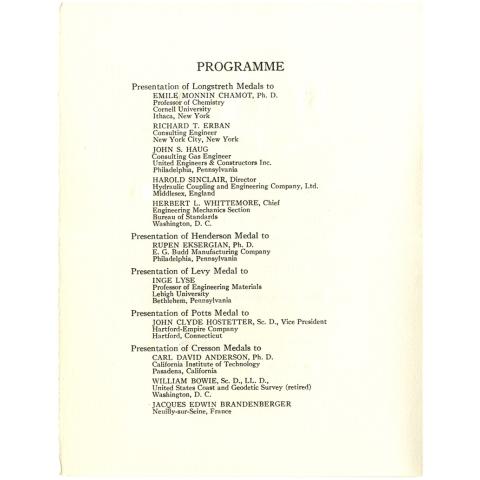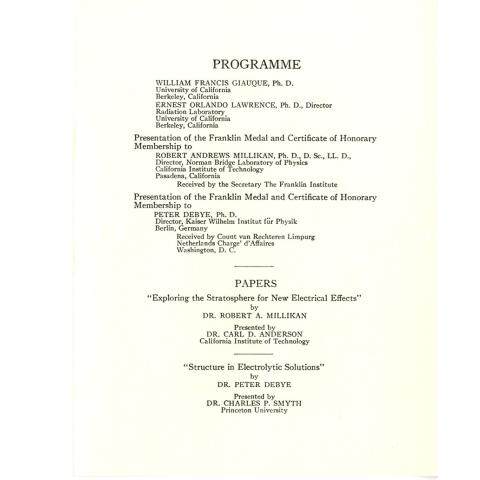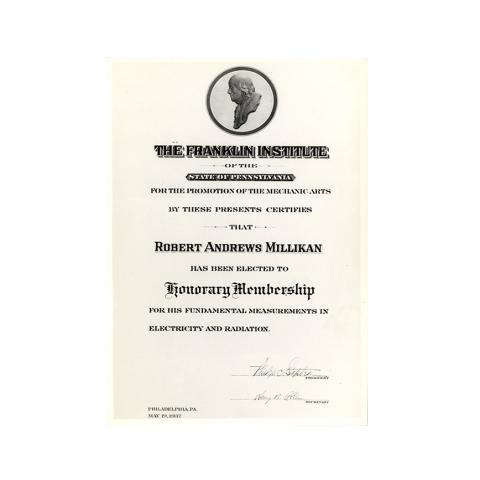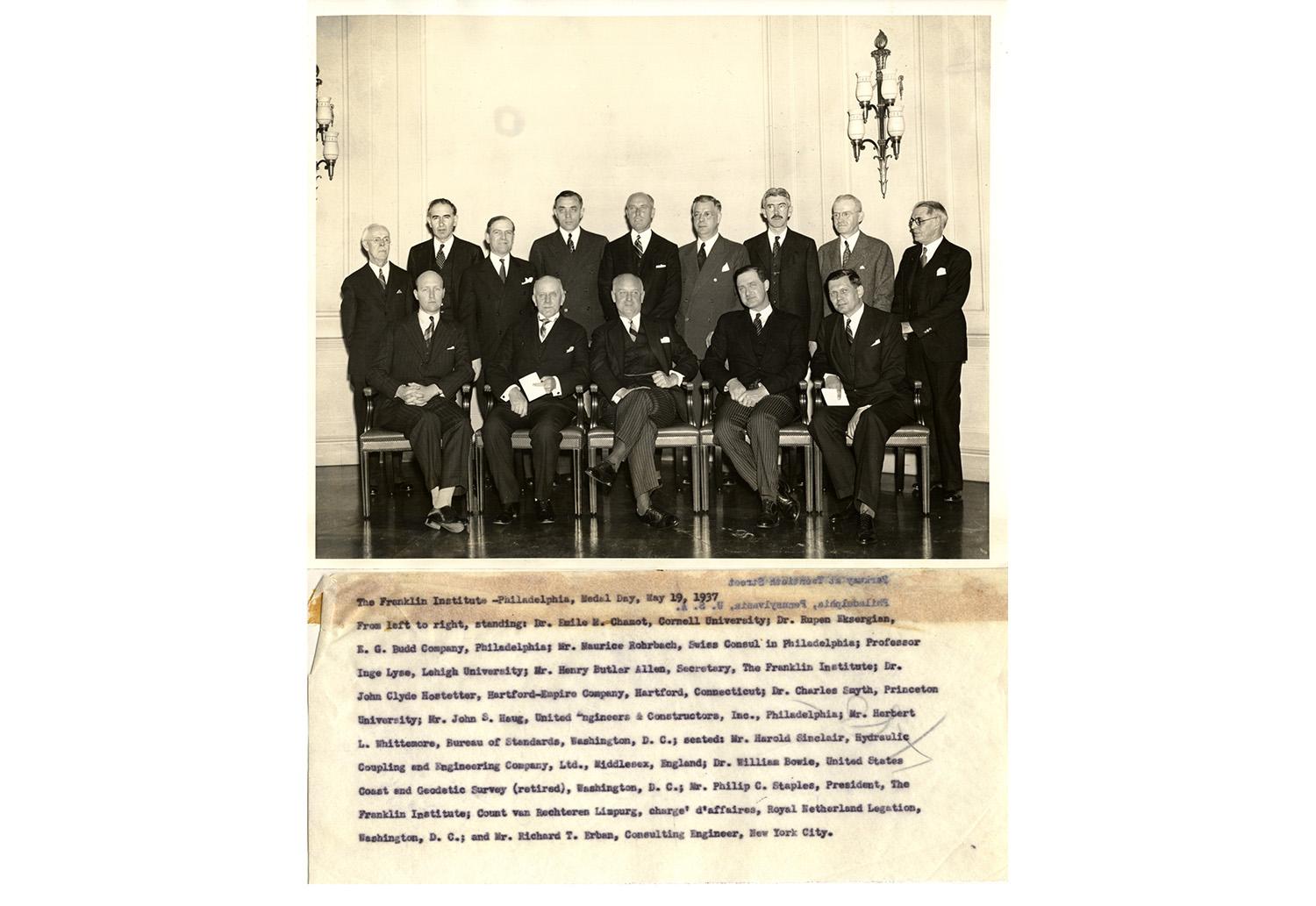
Introduction
Robert Millikan was devoted to teaching and stressed the importance of laboratory-based learning. He also held many administrative and leadership responsibilities in the field of science. Millikan's accomplishments were the design and fine-tuning of experiments that confirmed the most important scientific theories of his time, providing the implications for atomic theory.
Small Town
Robert Andrews Millikan was born on March 22, 1868 in Morrison, Illinois, the grandson of pioneers who had resettled from New England. He was the second son of six children born to Silas Franklin Millikan, a Congregationalist minister, and Mary Jane Andrews, former dean of women at Olivet College, Michigan. In 1872, the family moved to another small town, that of Maquoketa, Iowa. Millikan grew up working on the farm and attended Maquoketa High School.
Scientific Career
After a short stint as a court reporter, Millikan entered Oberlin College in Ohio (his mother's alma mater) and majored in the Classics, yet was persuaded by an advisor to adapt his fascination with mathematics to teaching physics. He remained teaching elementary physics after graduating in 1891. His scientific career proceeded to a Fellowship in Physics at Columbia University in 1893 and his first doctorate in Physics in 1895. His doctoral research concerned the polarization of incandescent light.
In 1895, Millikan moved to Germany and studied for a year with Max Planck and Walther Nernst at the Universities of Gottingen and Berlin, returning to the U.S. in 1896 to join A. A. Michelson at the University of Chicago.
Millikan married Greta Erwin Blanchard in 1902 and their family grew to include three sons.
Devoted to teaching, Millikan became a professor in 1910, establishing a curriculum and collaborating on many textbooks which stressed laboratory-based learning in introductory physics at the high school and college levels.
Important Discovery
Continuing experimentation led Millikan to his first important discovery of the elementary charge of electricity through use of his elegant "falling drop method", measuring the constant charge and quanta of electrons, the direct determination of Planck's Constant, confirmation of the atomic theory of matter, and experiments in spectroscopy beyond ultraviolet radiation levels. Important research in cosmic radiation and ionization phenomena followed.
Responsibility
Millikan took many administrative and leadership responsibilities in science: with the National Research Council organized by George Hale during World War I, the American Association for the Advancement of Science, and the American Physical Society. He represented the United States at the League of Nations and the International Congress of Physics and was a consultant to industry.
Caltech
In 1921, persuaded by George Hale and Arthur Noyes, Millikan moved from Chicago to the newly-established California Institute of Technology in Pasadena and the Directorship of its Norman Bridge Physics Laboratory. At Caltech, his research centered on "cosmic rays," a term he invented to describe high energy particles that strike the Earth's atmosphere. Millikan remained the Institute's leader as it grew to be world renown, finally retiring in 1945.
Religion vs. Science
This eminent scientist with a clergyman father, an education in the Classics, and a career in science devoted much effort to reconciling his religious and scientific philosophies and wrote and lectured widely on this topic.
Robert Millikan died on December 19, 1953, in San Marino, California, within a few weeks of his wife's death.
Important Theories
Robert Millikan's accomplishments were the design and fine-tuning of experiments which unambiguously confirmed the most important scientific theories of his time, providing the implications for atomic theory.
His oil drop experiment confirmed the existence of the electron and accurately determined its charge. His experiment on the photoelectric effect established the wave/particle dual nature of light.
Oil Drop Method
Millikan's requirements in designing his elegant and ingenious oil drop method were:
(1) The creation of the smallest possible, completely spherical, homogenous body. This body must have a constant mass in the absence of interfering gravitational force and convection currents.
(2) The application of an electric field to put a charge on the sphere, then changing this charge and measuring the resulting speed of the sphere.
The apparatus Millikan built admitted an oil drop (from an atomizer) into a stable atmosphere of fixed length between two metal plates which applied a fixed electric field to the drop. A switch in the circuit allowed the field to be turned on and off.
Experimentation with the apparatus involved varying the parameters: the measurable distance the drop traveled, the size of the plates, and the methods used to change the sphere's electrical charge.
Finally, the size of the oil drop was a thousandth of a millimeter in diameter, the centimeter of travel path for the oil drop was obtained from 22 cm diameter plates positioned 16 mm apart, and the strength of the applied charge was about 6,000 volts per cm. Each of these values proved optimum; variations would ruin the experiment.
The Full Gamut
Among the sources used to change the drop's charge were: alpha, beta, or gamma ray bombardment from radium, ultraviolet illumination, and X-ray irradiation—the full gamut of the electromagnetic spectrum.
The experimental facts determined were: there is a charge on an electron, there is a smallest "unit" charge, and the charge changes in discrete amounts or "quanta."
Over years of further study, the absolute value of the electron in absolute electrostatic units was obtained. They have no dimensions but are simply point charges of electrical force.
Next, the principles of atomic theory emerged with observations that the mass of positively charged electrons is 1,845 times that of negatives, the number of positives and negatives in an atom can be measured, and the negatives are distributed through the atom's nucleus and outer regions.
Wave Theory
The classical wave theory, published in the 1600s, described light as electromagnetic wave radiation moving in undulating motion through space from sources such as the sun or a light bulb.
Around 1900, Philipp Lenard demonstrated an exception to the accepted theory. He showed that when ultraviolet light was shone on two metal plates set a short distance apart in a vacuum, electric current flowed through the circuit. The ultraviolet light knocked some electrons from one plate; they flew to the other plate and completed the electric circuit. At some increased voltage level, the current stopped flowing. This phenomenon is known as the photoelectric effect.
In 1905, Einstein proposed an explanation for this effect built on the work of Max Planck. He stated that light is not distributed in continuous waves, but travels as of a finite number of points of energy (quanta) that move without dividing and can be absorbed or generated only in whole amounts; the behavior of light was more like a stream of particles than a continuous wave. It is a particle which supplies the energy to expel the electron from the metal plate. This theory met with resistance in the scientific community and remained to be experimentally proven.
Photoelectric Effect
Einstein proposed the equation:
E = hf-P
to describe the maximum kinetic energy of each escaping electron in the photoelectric effect. E is the "escape" energy, f is the frequency of incident light, P is Planck's constant, and h is the "work function," described by Robert Millikan as "the work necessary to get the electron out of the metal."
Over a ten-year program of experimentation, Robert Millikan devised the apparatus to verify Einstein's theory. Inside an evacuated glass bulb, a plate of an alkali metal, such as lithium, sodium, or potassium, was mounted on a wheel which moved past a scraper knife and then into the path of monochromatic light at various frequencies. Millikan measured the voltage required to prevent the induced current. The graph of incident light frequency versus voltage was a straight line. Einstein's equation was verified.
Despite his experimental results, Millikan took some time to be completely convinced of Einstein's theory. Confirmation from later experiments on the topic by other scientists eventually changed his mind. The modern theory of light contains both the wave properties and the particle (photon) properties of light.
Read the Committee on Science and the Arts Report on Robert A Millikan’s life and his work with the electron, radiation, and the ultraviolet spectrum.


